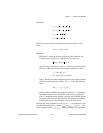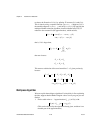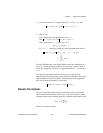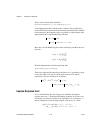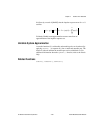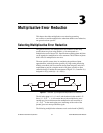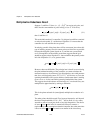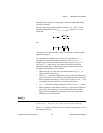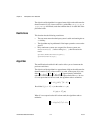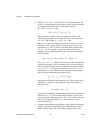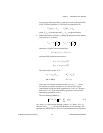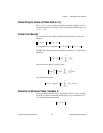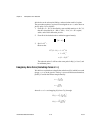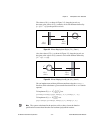
Chapter 3 Multiplicative Error Reduction
Xmath Model Reduction Module 3-4 ni.com
The objective of the algorithm is to approximate a high-order stable transfer
function matrix G(s) by a lower-order G
r
(s) with either inv(g)(g-gr) or
(g-gr)inv(g) minimized, under the condition that G
r
is stable and of the
prescribed order.
Restrictions
This function has the following restrictions:
• The user must ensure that the input system is stable and nonsingular at
s = infinity.
• The algorithm may be problematic if the input system has a zero on the
jω-axis.
• Only continuous systems are accepted; for discrete systems use
makecontinuous( ) before calling bst( ), then discretize the
result.
Sys=bst(makecontinuous(SysD));
SysD=discretize(Sys);
Algorithm
The modifications described in this section allow you to circumvent the
previous restrictions.
The objective of the algorithm is to approximate a high order stable transfer
function matrix G(s) by a lower order G
r
(s) with, in the square G(s) case,
either or
(approximately) minimized,
under the constraint that G
r
is stable and of prescribed order nsr. In case
G is not square but has full row rank, the algorithm seeks to minimize:
Recall that so that when ,
When G is not square but has full column rank, the algorithm seeks to
minimize:
GG
r
–()G
1–
∞
G
1–
GG
r
–()
∞
GG
r
–()
*
GG
*
()
1–
GG
r
–()
∞
X
*
s() X′ s–()= sj
ω
=
X
*
jω() X
*
jω()=
GG
r
–()G
*
G()
1–
GG
r
–()
* ∞



